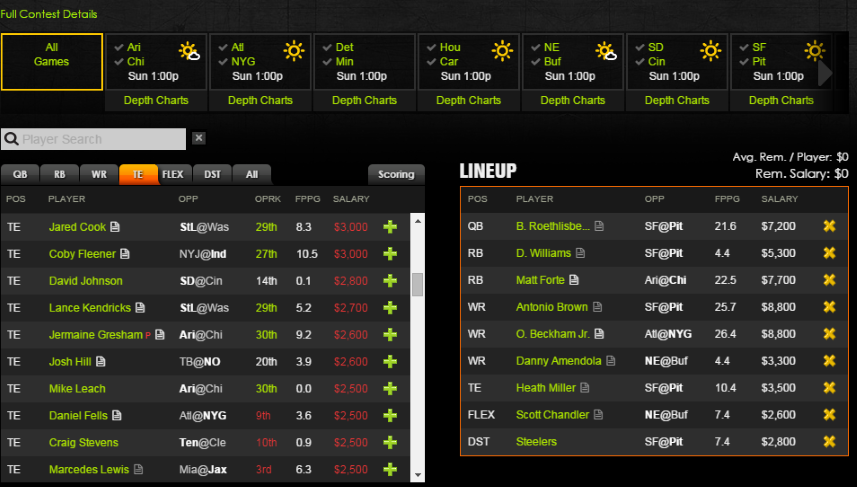One of the best daily fantasy roster forming strategies out there right now is called roster stacking, and it is widely misused. That’s right, it’s a great strategy when it is done right, but most people that use it aren’t doing so correctly. It opens up tons of opportunities for the average daily fantasy sports fan to dominate their league, and it isn’t even that tough to learn to do. Roster stacking is the art of selecting many players from one team because that one team is projected to win big over another team. It is a deceivingly tough practice, though. It needs to be done right or it can backfire on you, and that’s pretty much throwing your money away because it does involve putting all of those proverbial eggs in one basket.
Here, we will break this winning strategy down into four simple steps. These should be more than enough to get you thinking about how to use this tough strategy to your advantage and start winning more money.
1.) Pick a team that’s a big favorite. Don’t just go by who you think is the favorite, though. Go by the Vegas line. You can find this posted on multiple sites and different online sports books. You are not gambling here, but you do want to find out who the statisticians think is the favorite and by how much. Going with a 3.5 point favorite is nice, but going with a 14 point favorite is even better. It tilts the odds in your favor in a bigger way. A losing quarterback can score a lot of fantasy points, but the winner will typically score many more. If only for this reason, you want a team that is almost never going to lose.
2.) Pick a team with a couple big stars. If the Miami Dolphins are favorites over the Washington Redskins, that’s great, but drafting a Ryan Tannehill is not going to help you much in this strategy simply because he doesn’t have a good supporting cast—and his point value isn’t enough to make this worthwhile, either. However, looking to the Green Bay Packers over the Chicago Bears is a game changer. Now you have Aaron Rodgers to work with, but you also have Randall Cobb, Davante Adams, and Ty Montgomery. There are a lot of players to work with here, and not every team has this.
3.) Look for value opportunities. If you use this strategy, you will find yourself hurting right off the bat because you will need to draft players that are expensive. Cost is fine; your salary isn’t what wins contests. That’s what your fantasy points are for. Salary just helps you get more points. But, if you don’t use your salary right, you will not prosper. This is where value steps in. Go with an Aaron Rodgers, and you will need to make up for that salary in other places by drafting players that are very cheap, but that still have a ton of point potential. Your superior understanding of stats and how teams work will help you here. Roster stacking gives you an advantage in this too, because of the fact that a quarterback can’t win games on his own. Pick a top QB, and then fill in the spots around him. A great QB needs a good wide receiver, a good running back for tough plays, and sometimes a top rated tight end. When you stack your roster, you should be able to instantly select four players (QB, WR, RB, TE), but these are not the only ones you should go with. If there are good value plays on the team, find them. Only after exhausting your options should you branch out to other teams to look for value.
4.) Look for cohesion. Players need to work together in order to produce points. If a quarterback is unproven with certain players, roster stacking has a higher likelihood of failure. Look at what’s going on in Philadelphia right now. Sam Bradford is a highly talented QB, but in a brand new situation. Yes, he has some great tools to help him out. One of these is the best running back in the league: DeMarco Murray. But, there’s no proven connection here. It’s likely to work, but not as guaranteed as other situations that exist in week #1.


